I first met arugula, Eruca sativa, when I made a spring panzanella salad several years ago. I’d never used the leafy green before, but I was hooked from the first peppery bite.
And when I started shopping for seeds to grow my own, what a surprise it was to discover so many different varieties were available.
If you’ve not yet fallen in love with the peppery deliciousness of this member of the Brassicaceae family, it’s probably because you just haven’t tasted the right variety. Or maybe you’ve only eaten the bagged stuff that is sold at the grocery store.
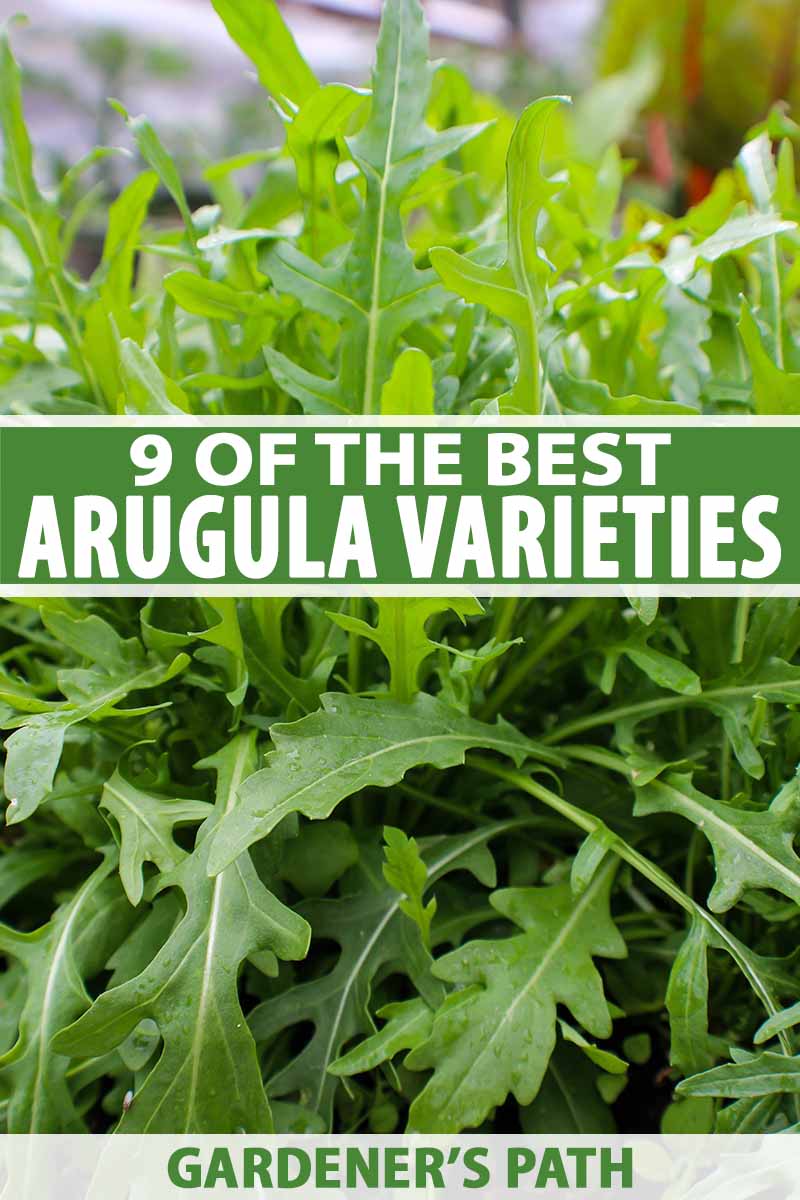
We link to vendors to help you find relevant products. If you buy from one of our links, we may earn a commission.
One freshly-picked bite, and I can almost guarantee that you’ll be hooked!
I’ve rounded up a list of nine deliciously zippy varieties for you to consider growing in your veggie patch. If you’re new to growing this leafy green, you can see our full guide on how to grow arugula here.
Since the plant grows so quickly, you could be harvesting arugula leaves for your own salad in just a few weeks.
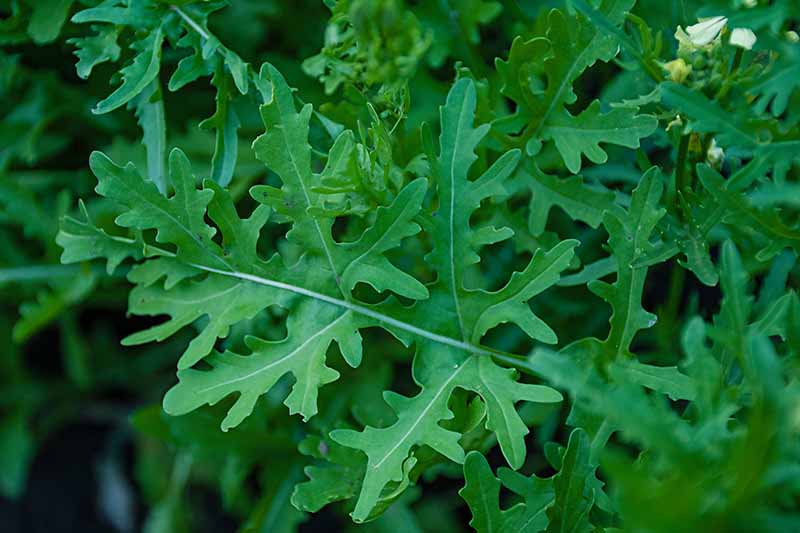
Without further ado, I present the nine best varieties for you to grow outdoors or indoors, all year round.
9 of the Best Arugula Varieties for Your Garden
1. Astro
For those of you who like arugula but not so much the spicy kick of some varieties, the ‘Astro’ cultivar’s mild, yet peppery flavor might be a perfect match.
Harvest baby greens in just three weeks, or wait the full 38 days for even milder mature leaves. The edible white flowers can also brighten up your salads.
However, keep in mind that after flowering, the leaves tend to taste a little sharper.
Seed packets with 400 heirloom seeds are available from Botanical Interests.
2. Garden Tangy
This cultivar comes directly from Italy, making it a perfect garnish for all of your Italian-style dishes. With a spicy flavor and frilly leaf edges reminiscent of kale, ‘Garden Tangy’ adds a kick to pasta dishes, salads, and more.
It’s also quick to mature. In just 30-35 days, you can pluck 10- to 12-inch leaves from the plant. Like all arugula varieties, this one loves cool weather and sunshine.
Packets of 800 seeds are available at Burpee.
3. Italian Cress
With large, lettuce-like leaves, ‘Italian Cress’ is an ideal addition to salads and sandwiches. It’s also convenient for those who struggle with patience, because each leaf provides lots of edible greenery compared to other, skinnier varieties.
This basically means you don’t have to pick as much at one time in order to enjoy a salad. And this is also helpful for those who grow greens indoors over the winter and gardeners who have limited space.
The large leaves can also be sauteed like spinach, or added to soups and stews. ‘Italian Cress’ matures in just 30 days.
You can find packets of 500 seeds available from Walmart.
4. Red Dragon
Back in my yard in Oklahoma, I had a big, beautiful oak tree that dropped gorgeous leaves and tiny acorns all over the front lawn every fall.
The ‘Red Dragon’ cultivar, with its serrated, oak-leaf-shaped leaves, reminds me of that tree.
Except for the fact that my oak tree’s leaves didn’t feature a red vein branching through the center. How neat is that?
This is the perfect variety for a deliciously striking salad. And with its mildly peppery flavor, you can serve it to guests who’ve never tried arugula before for a flavorful, but not overbearing, first impression.
Another slow-grower, this plant matures in 45 days, reaching a height of just five to six inches at maturity.
You can get packets containing 1,000 seeds from Burpee.
5. Rocket
Crisp and lightly peppery, the ‘Rocket’ cultivar is the dream base for any salad. I used ‘Rocket’ in that fateful spring panzanella salad that led me to be enamored with arugula forevermore.
This is the type of arugula most of us are familiar with, as it’s commonly available in supermarkets. But the flavor is even better when it’s picked fresh from your own veggie patch.
It’s no wonder this is the most popular variety of the leafy green. If you’ve never tried growing arugula before, this heirloom cultivar is a good place to start.
Maturing in just 40 days, this cool-season vegetable grows six to 12 inches tall at maturity, in a sunny or partly shady spot.
Packets of certified organic seeds are available in various sizes at Eden Brothers.
6. Selvatica
If you live in USDA Hardiness Zones 8 and up, you might benefit from the heat-tolerant qualities of ‘Selvatica.’ This cultivar resembles the wild, plucky weed from whence all modern cultivated types of arugula came.
A tangy, sun-loving cultivar, these leaves grow to about 10 to 12 inches tall at maturity, plants spread four to seven inches, and they mature super quickly, in just 30 days.
Packets of 500 organic ‘Selvatica’ seeds are available at Burpee.
7. Slow Bolt
Hot weather can cause arugula to grow more quickly and bolt, which means it can begin to flower and go to seed almost faster than you can harvest it.
That’s why heirloom ‘Slow Bolt’ is another winner for gardeners living in USDA Hardiness Zones 8 and up.
This variety matures in 43 days – ages compared to some non-slow-bolting varieties. And this quality gives you more time to harvest those tender baby leaves.
The larger mature leaves can be used not only raw in salads and sandwiches, but can be added to soups and stews for a mildly peppery kick as well.
You can find seeds in a variety of packet sizes at True Leaf Market.
8. Wasabi
As its name suggests, the extra-spicy ‘Wasabi’ cultivar goes perfectly with sushi or in Asian-inspired spicy ground beef lettuce wraps, a recipe I simply love, which you can find on our sister site, Foodal.

A frost-hardy variety, ‘Wasabi’ likes to grow in the spring, summer, and fall. It takes a little longer to germinate than other varieties, so don’t be alarmed if seedlings don’t poke through the soil right away.
‘Wasabi’ takes 10 to 12 days to germinate. But you can harvest the spoon-shaped leaves four to five weeks later. Yum!
Get 500 seeds for this piquant palate pleaser today from the Park Seed Store via Amazon.
9. Wild Rocket
For a slim, almost weedy-looking plant that packs a bold flavor, try ‘Wild Rocket.’ This perennial cultivar even grows like a weed, reaching skyscraper-esque heights of 20 inches at maturity.
Boasting a stronger flavor than its tamer twin, ‘Rocket,’ ‘Wild Rocket’ is a perfect substitute for basil in any pesto recipe – like this one from our sister site, Foodal.
Why not grow the ‘Wild Rocket’ variety alongside regular ‘Rocket’ for a tasty contrast of nuttiness and peppery flavor in your salads?
This variety matures in about 40 days.
Packets of seeds in a variety of sizes are available at Eden Brothers.
Everyone Can Get a Ticket to Arugula-Land
The best thing about arugula is that there’s a cultivar out there to suit everyone’s personal tastes. Try growing several together and see which one (or ones) you love best.
Your taste buds will thank you. And so will your immune system – with all its vitamins and nutrients, arugula loves to help you stay healthy.
All the more reason to start growing it right away!
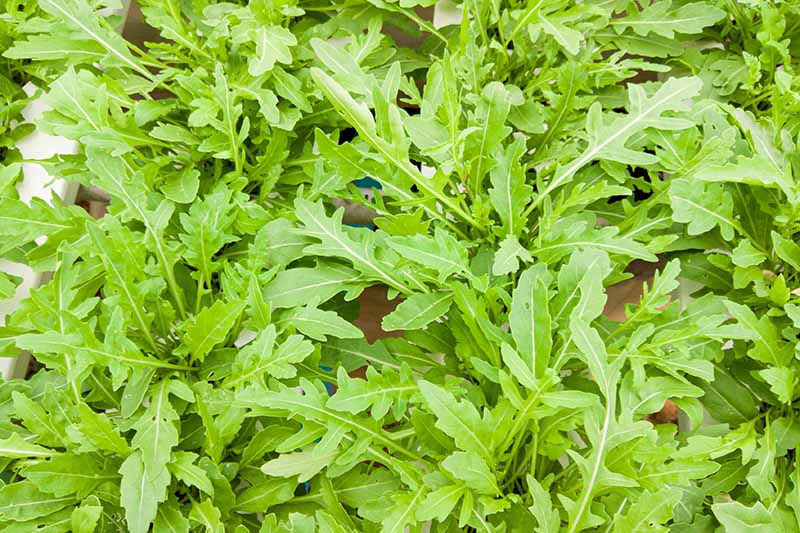
Have you ever grown arugula? What’s your favorite variety? Share any and all tips, comments, and questions with us below.
And don’t miss these articles on other deliciously healthy cruciferous vegetables to grow at home:
- How to Identify and Manage 15 Common Arugula Pests
- How to Plant and Grow Cabbage: a Fall and Spring Staple Crop
- Harvest Hearty Greens from the Garden: How to Grow Kale
© Ask the Experts, LLC. ALL RIGHTS RESERVED. See our TOS for more details. Product photos via: Burpee, Eden Brothers, Park Seed Store, Seed Kingdom, and True Leaf Market. Uncredited photos: Shutterstock. With additional writing and editing by Clare Groom and Allison Sidhu.
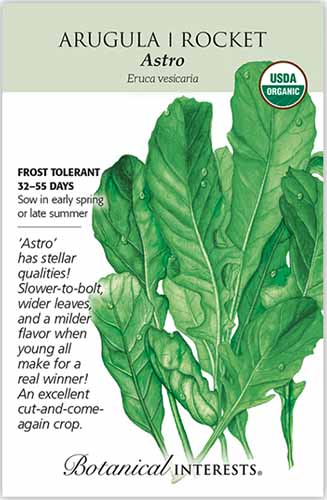
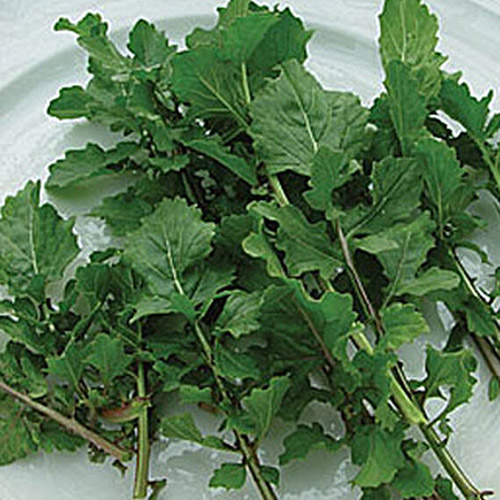
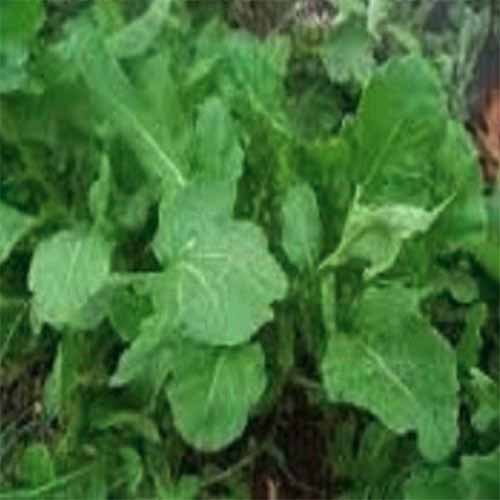
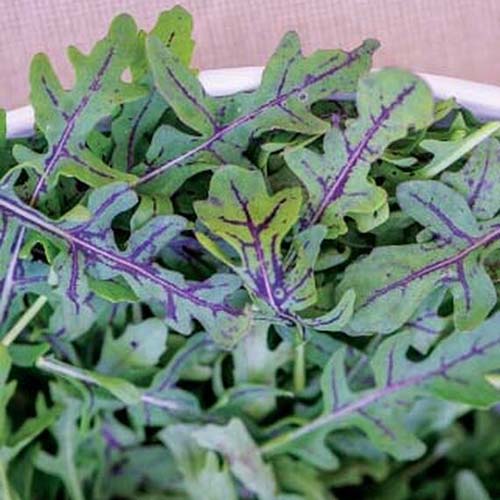
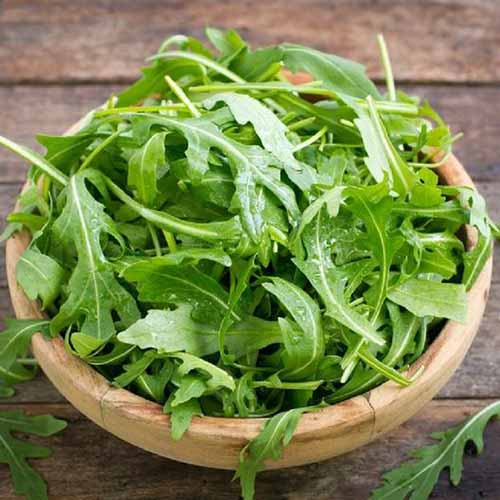
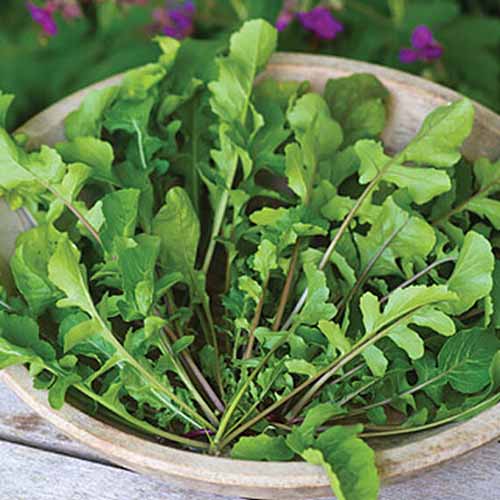
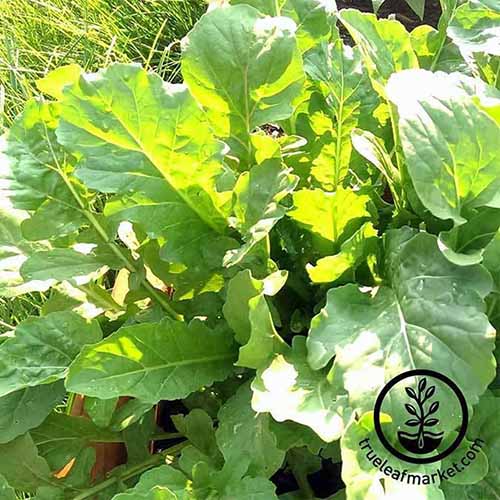


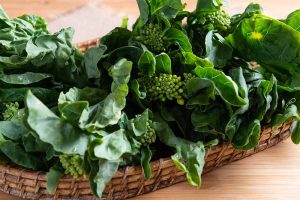
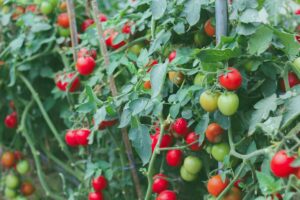
Thank you for your lovely and informative article! I am in zone 8 and Rocket will do nothing but bolt for me even when planted in early spring in part shade, so I am happy to learn from you that there are other varieties I can plant that may fare better in my garden.
Hi Jen! Thank you so much for your kind words. Arugula is SO prone to bolting, isn’t it? It can be hard to keep up!
Please help me ID this herb TIA
Thanks for the question and photos! This looks like it could be musk mallow (Malva moschata) or lesser swine-cress (Lepidium didymum). Does it have a musky odor when pinched? Or does it have a strong, peppery smell?
Hello, May I ask your help to ID mine? The leaves looks exactly like Selvetica, they taste not peppery and smell very musky. The packet said “wild arugula.” It grows so fast! After spreading the seeds, it grows and is easy to be picked within 3 weeks, after that I did absolutely nothing. Only harvest the outer layer. But I am not fan of its very musky smell. It’s only nice tucked inside a hamburger.
That sounds so interesting! Do you have any photos you can upload? That would help a lot.
Hello!
I’d like to know if you can help be identify this plant, I’m pretty sure it’s an arugula, but also looks like an escarole lettuce.
HI Maristela! I’d love to help, but if you attached a photo it didn’t upload. I’d be happy to take a look if you’re able to upload the photo!
Hello!
So sorry, here it is.
Thank you.
Hi , I’m familiar with 2 types of arugula. I think of them as good and bad. The good one is well mannered and doesn’t spread all over my garden. The bad one said wild arugula seeds and roots. I’m still weeding it out several years later. The wild one spreads two ways, through seedlings and through roots, which makes it almost impossible to weed out. I believe one has white flowers and the other yellow. I didn’t know there were so many other varieties. Thanks for the info.
Judith Kotkin
That’s so interesting — thank you for reading, Judith!
I was given an arugula plant a few weeks ago and fell in love. Only to discover its bolting now. Soo sad. Thanks for yr article.